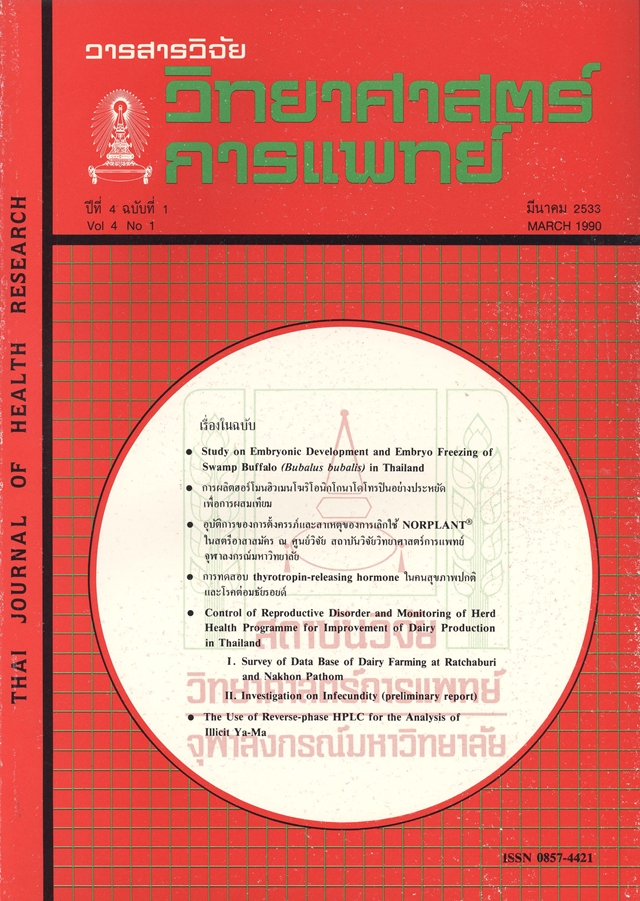Control of Reproductive Disorder and Monitoring of Herd Health Programme for Improvement of Dairy Production in Thailand
II. Investigation on Infecundity (preliminary report)
Keywords:
Reproduction, disorder, Health, surveys, Infecundity, dairy cowAbstract
Our preliminary investigation on baseline information of dairy farming in Ratchaburi by using questionaire during July 1986 to March 1987 indicated that there were 4 different groups of farming and the problem of infertility. Of which the objective of the present research was performed during a period of 15 months. This phase consisted of an approach to study the epidemiological problem of infertility which will allow us to percise the effects of pathology at parturition and post partum, principal factors affect on reproduction and their interaction. Fourty-three farms and one big farm were randomly chosen among average good management practice. Each of the total 700 heads was followed up from calving to pregnant. The follow up programme composed of systematic examination of the key period of the sexual cycle. At around 30 days post-partum (p.p.) in order to control the uterine involution, detect and treat the uterine infection. At around 60 days p.p. anestrous animals were subjected to examination and appropriate treatment. Following insemination, examination for pregnancy by measuring the levels of prog sterone in the milk sample collelcted on day 22 after the insemination and non return to estrus between day 21-24, examination and treatment of the cows having inseminated more than 3 times and non pregnant (repeat breeder) were performed. Pregnancy diagnosis by examination per rectum was also carried out (about 60 days post insemination). Manual record of the findings and age of animal, number of lactation, condition of calving (dystokia and retention of placenta) were carried out. Preliminary results obtained from 878 calvings were control of uterine involution 792 cases, dystokia 178 (20.3%), retained placenta 132 (15.0%) and metritis 133 (16.8%). Comparison of reproductive performance prior to and post application of the programme : mean (+ SD) interval between calving and first insemination and interval between calving to conception (days) during 1986-1987 and 1987 1988 for small holders were respectively 104 + 56 (n = 303) VS 72 + 18 (n = 518) and 169 + 125 (n = 304) VS 110 + 56 (n = 264). The present findings seem to be promising as the farmers obtained substantial gain of 40 and 80 days between calving to insemination and calving to conception respectively.







